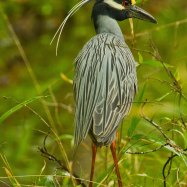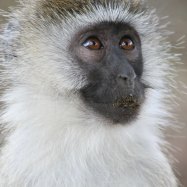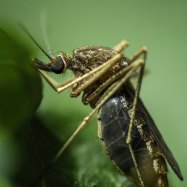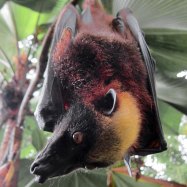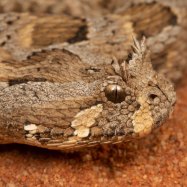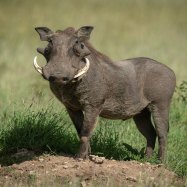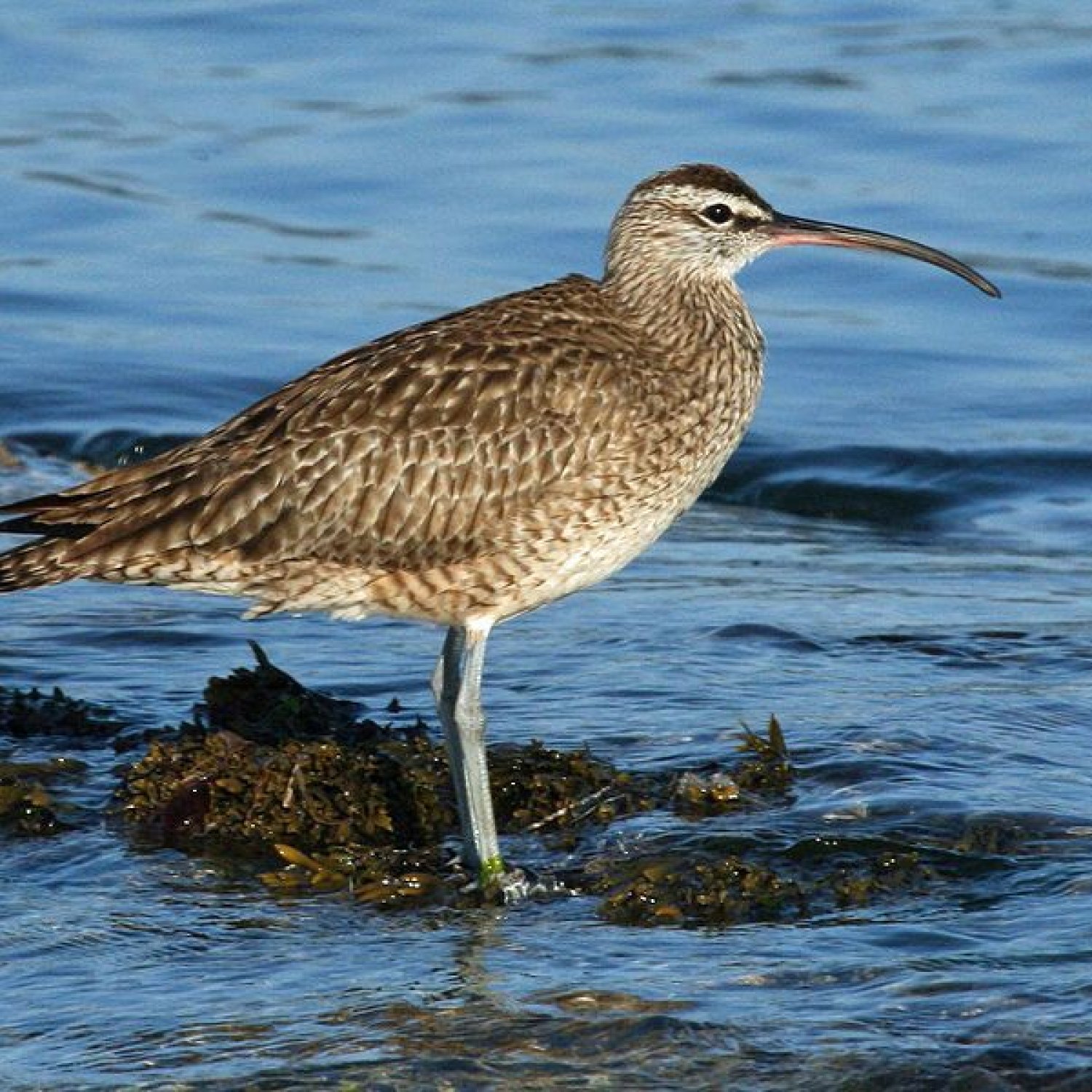
Whimbrel
40 - 50 cm
. The Whimbrel, a medium-sized wading bird with a unique curved bill, can be found in various locations around the world. Belonging to the Scolopacidae family, this bird can reach a length of 40-50 cm. Keep an eye out for these fascinating creatures while out and about in nature! #Whimbrel #Scolopacidae #wadingbird
Animal Details Summary:
Common Name: Whimbrel
Kingdom: Animalia
Habitat: Coastal areas, mudflats, grasslands, tundra
The Elegant and Wily Whimbrel: A Master of Coastal Living
The world is full of unique and fascinating creatures, each with their own distinctive features and abilities. One such animal that deserves our attention and admiration is the whimbrel, also known by its scientific name Numenius phaeopus. These birds are found in various places all over the world and have amazed scientists and bird enthusiasts alike with their beauty and impressive survival skills.Whimbrels belong to the kingdom Animalia, the phylum Chordata, and the class Aves Whimbrel. They are part of the order Charadriiformes, which contains over 350 species, including shorebirds, gulls, and auks. Within this order, whimbrels are grouped into the family Scolopacidae, along with other long-billed wading birds like sandpipers and curlews.
These birds have a widespread distribution, with populations found in North America, Eurasia, Africa, and Australia. In fact, they are one of the most widely distributed species of wading birds in the world. They are known to migrate long distances, with some individuals traveling up to 8000 kilometers from their breeding grounds to their wintering grounds. Whimbrels are not picky when it comes to their living quarters, and they can thrive in a variety of habitats, including coastal areas, mudflats, grasslands, and tundras.
One of the most distinctive features of the whimbrel is its long, curved bill, which gives it a distinguished and elegant appearance. This medium-sized wading bird has a body length ranging from 40 to 50 cm, making them slightly larger than American robins. They have a brown and gray-speckled plumage, with a white belly and a dark crown on their heads Walking Catfish. This coloration helps them blend in with their surroundings and makes them less visible to predators.
A Skilled Probing Feeder
Feeding is a vital activity for all living beings, and whimbrels have developed a unique and efficient method of getting their nutrition. These birds are skilled at probing, which is the act of sticking their long bill into the ground to search for food. They use this technique to find worms, insects, and crustaceans in the mud and soil. Often, whimbrels can be seen running and pecking at the ground, making use of their sharp bill to capture their prey.Their beak is specially designed for this purpose, with a sensitive tip that can detect tiny movements below the surface of the ground. Whimbrels have a unique sense of touch in their bill, which allows them to locate their food in the soft mud. This adaptation enables them to forage in areas with poor visibility and find food in places where other birds may not be successful.
Apart from probing, whimbrels also feed on insects and crustaceans found on the surface of the water. They have a varied diet, which includes beetles, grasshoppers, spiders, and small fish. During their migration, they may also consume berries and fruits found in their path.
Nomadic by Nature
The concept of home varies from species to species, and for the whimbrel, home is wherever they choose to be at a particular time. These birds are nomadic by nature, meaning they have no permanent nesting grounds but rather move around in search of food or suitable breeding conditions. They are one of the few bird species that change their breeding locations every year, which makes it challenging for scientists to track and study their behavior.In the breeding season, whimbrels are found in northern regions like Alaska, Canada, and Scandinavia. These locations provide them with the perfect conditions for nesting, including an abundance of food and shelter. When the breeding season is over, whimbrels travel to their wintering grounds, mainly located in South America, Africa, and southern parts of Asia. The reason for this extensive migration is to take advantage of the seasonal changes and to find the most suitable conditions for their survival.
Masters of Coastal Living
As their name suggests, whimbrels are highly adapted to living near the coast and other wetland areas. Their long legs allow them to wade comfortably through shallow water, while their prominent toes help them maintain their balance on soft surfaces. They have a keen sense of hearing and can detect predators or other birds from a distance, which helps them stay alert and safe in their environment.Apart from their physical adaptations, whimbrels also have some behavioral traits that aid in their survival. They are highly social birds and are often seen in small groups, known as flocks, especially during migration. This allows them to communicate and cooperate for different tasks, such as finding food and protecting their territory. Whimbrels also have a distinctive call, a loud and nasal whistle that helps them communicate with other birds in their flock.
A Species of Concern
While whimbrels are abundant and widespread, their populations face several threats that could impact their survival. One of the main concerns for these birds is habitat loss due to human activities like coastal development, pollution, and oil spills. Overhunting, particularly during their migration, is also a significant threat to their populations, with some countries still allowing the legal hunting of whimbrels.In addition to these threats, the changing climate and sea levels also pose a risk to whimbrels. The rise in sea levels could significantly impact their breeding grounds, causing disruption in their nesting and reproductive cycles. As with many other bird species, shifts in their natural habitats and food availability could have severe consequences for whimbrels.
In Conclusion
Whimbrels are a fascinating species of birds that have captured the curiosity and admiration of bird watchers, scientists, and nature enthusiasts alike. Their ability to adapt to different environments and their efficient foraging techniques make them masters of coastal living. As we continue to learn more about these birds, it is essential to take steps to protect their populations and ensure their survival for generations to come. The whimbrel is an elegant and wily creature that deserves our admiration and protection in the ever-changing world we live in.

Whimbrel
Animal Details Whimbrel - Scientific Name: Numenius phaeopus
- Category: Animals W
- Scientific Name: Numenius phaeopus
- Common Name: Whimbrel
- Kingdom: Animalia
- Phylum: Chordata
- Class: Aves
- Order: Charadriiformes
- Family: Scolopacidae
- Habitat: Coastal areas, mudflats, grasslands, tundra
- Feeding Method: Probing
- Geographical Distribution: North America, Eurasia, Africa, Australia
- Country of Origin: Various
- Location: Various
- Animal Coloration: Brown, gray, white
- Body Shape: Medium-sized wading bird with a long, curved bill
- Length: 40 - 50 cm
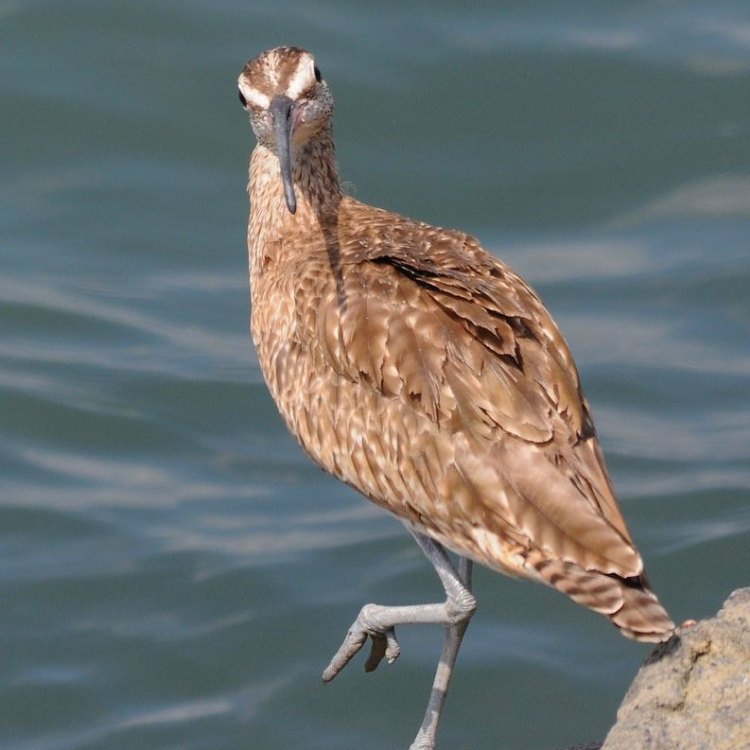
Whimbrel
- Adult Size: Medium
- Average Lifespan: 10 - 15 years
- Reproduction: Oviparous
- Reproductive Behavior: Monogamous
- Sound or Call: A loud, whistled call
- Migration Pattern: Long-distance migrant
- Social Groups: Generally seen in small groups or solitary
- Behavior: Solitary or in small groups
- Threats: Habitat loss, hunting
- Conservation Status: Least Concern
- Impact on Ecosystem: Important role as a predator of invertebrates
- Human Use: Hunting, birdwatching
- Distinctive Features: Long, downcurved bill and distinctive striped head pattern
- Interesting Facts: Whimbrels are known for their long-distance migration, with some individuals traveling up to 8,000 miles.
- Predator: Birds of prey, mammals
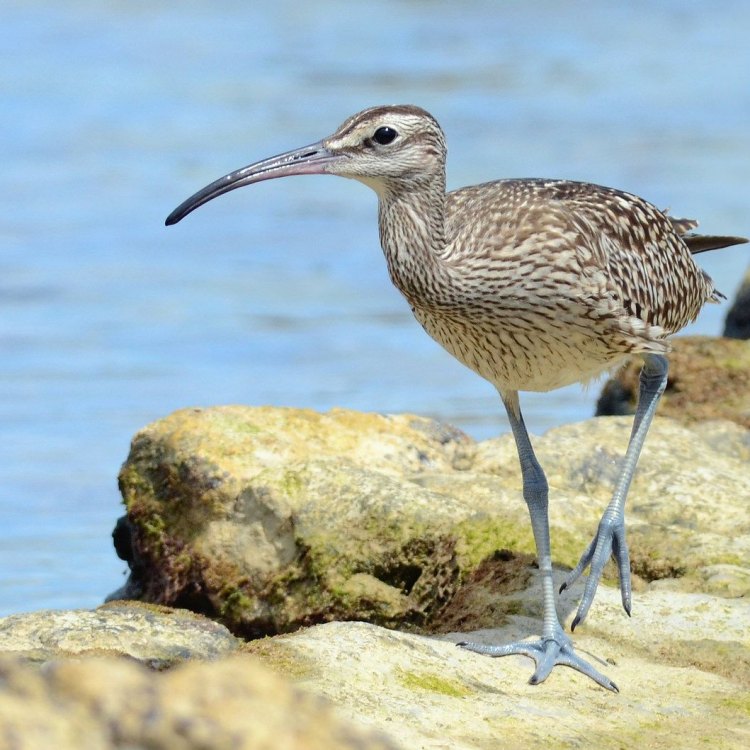
Numenius phaeopus
The Fascinating World of Whimbrels: A Unique Bird with Long-Distance Migration
The world is full of fascinating creatures, and one of the most unique and intriguing among them is the Whimbrel. This medium-sized bird, with its distinctive striped head pattern and long, downcurved bill, has captured the curiosity of bird enthusiasts and scientists alike. With its interesting behaviors, important role in its ecosystem, and long-distance migration, the Whimbrel is truly a remarkable species.In this article, we will dive into the world of Whimbrels, exploring their physical characteristics, behaviors, threats, and interesting facts PeaceOfAnimals.Com. We will also discuss their impact on the ecosystem and their significance to human use, shedding light on why this bird is so highly valued and admired.
Physical Characteristics
The Whimbrel (Numenius phaeopus) is a medium-sized wading bird, measuring approximately 17-21 inches in length and weighing 14-28 ounces. They have a wingspan of 32-38 inches, making them larger than other shorebirds like sandpipers and dunlins. Whimbrels have long, slender legs that are dark gray in color, and their feet are black with yellow stripes.
One of the most distinctive features of the Whimbrel is their long, downcurved bill, which can reach up to 4 inches in length. The bill is dark brown with a pink base, and it is used for probing in the mud for food. Whimbrels have a dark gray back and wings, with a light belly and chest. But what truly sets them apart is their striking head pattern - a brownish crown with bold black and white stripes extending down their face.
Behavior and Reproduction
Unlike other shorebirds that are typically seen in large flocks, Whimbrels are most often spotted in small groups or solitary Wasp. They are solitary hunters, feeding on crabs, clams, worms, and other invertebrates found in coastal mudflats and marshes.
Whimbrels are monogamous, and pairs will stay together for multiple breeding seasons. They typically breed in the Arctic tundra, laying 3-4 large, olive-colored eggs in a shallow depression on the ground. Both parents take turns incubating the eggs for 22-29 days until they hatch. The chicks are able to leave the nest shortly after hatching and can fly after 30 days.
Migration Patterns
One of the most interesting facts about Whimbrels is their long-distance migration. These birds are known for traveling up to 8,000 miles during their annual migration, making them one of the most accomplished long-distance migrants in the animal kingdom.
During the breeding season, Whimbrels can be found in the Arctic tundra, but as the season changes, they migrate to their wintering grounds in South America, the Caribbean, and even as far as Australia and New Zealand. They travel in small groups, stopping at various locations along the way to rest and refuel. The exact routes and timing of their migration are still not fully understood, but it is believed that they rely on the position of the sun and magnetic fields for navigation.
Threats and Conservation Status
Despite their long-distance migration and ability to thrive in various habitats, Whimbrels are facing threats to their survival. One of the biggest threats is habitat loss due to human development and climate change. Coastal development and pollution have greatly reduced the number of suitable nesting and feeding areas for Whimbrels. As a result, their population has declined in many areas, and they are now considered a species of conservation concern in some parts of the world.
In addition to habitat loss, Whimbrels also face threats from hunting and poaching. These birds are often hunted for sport, food, or for their feathers, which are used in traditional ceremonies and crafts. This has had a significant impact on their populations in some areas.
Despite these threats, the overall population of Whimbrels is still abundant, and they are currently listed as Least Concern on the International Union for Conservation of Nature (IUCN) Red List of Threatened Species. However, continuous monitoring and conservation efforts are needed to ensure their survival in the long run.
Importance in the Ecosystem
Whimbrels may not be the most well-known birds, but they play a crucial role in their ecosystem. These birds are predators of invertebrates, and their presence in coastal areas helps to regulate the populations of these creatures. This is important not just for the balance of the ecosystem but also for the economic value of these invertebrates, which are a food source for many other animals.
In addition, the annual migration of Whimbrels has a significant impact on the global ecosystem. As they travel across vast distances, they bring nutrients from their breeding grounds to their wintering grounds. This helps to fertilize the soil and support the growth of plants, which in turn provides food and shelter for other animals.
Human Use
Whimbrels have been a part of human life for centuries. They have been hunted for their meat and feathers, and their striking appearance has made them a popular subject for birdwatching and photography. Many people also enjoy studying the Whimbrel's behavior and migration patterns, making it a significant species for research and education.
However, it is important to note that these human uses can also have negative impacts on Whimbrel populations. Responsible and sustainable practices must be in place to ensure that these birds are not overexploited and their habitats are not destroyed.
Interesting Facts
Whimbrels are fascinating birds with many interesting facts worth mentioning. We have already discussed their long-distance migration, but did you know that some Whimbrels travel up to 3,500 miles non-stop during their migration? This is an impressive feat for a bird that weighs less than 2 pounds.
Whimbrels are also skilled at evading predators. They use their long bills to probe in the mud for food, then quickly retract it to avoid potential danger. They are also known for their loud and distinctive whistled call, which can be heard from quite a distance.
Another interesting fact is that Whimbrels have been found to have different migration patterns, with some traveling in a loop from their breeding grounds to their wintering grounds and back, while others travel in a straight line. This variation in behavior adds to the mystery and wonder of these incredible birds.
Predators
As with any animal, Whimbrels have natural predators that pose a threat to their survival. Birds of prey, such as eagles, hawks, and falcons, are known to hunt Whimbrels. Mammals, including foxes and weasels, may also prey on Whimbrel eggs and chicks. These predators play an important role in maintaining a balance in the ecosystem and keeping Whimbrel populations in check.
In conclusion, the Whimbrel is a unique and remarkable bird that has captured the hearts and minds of bird lovers around the world. From their physical characteristics and behaviors to their long-distance migration and importance in the ecosystem, there is so much to learn and appreciate about these birds. As we continue to explore and protect their habitats, we can ensure that they continue to grace our skies for years to come.
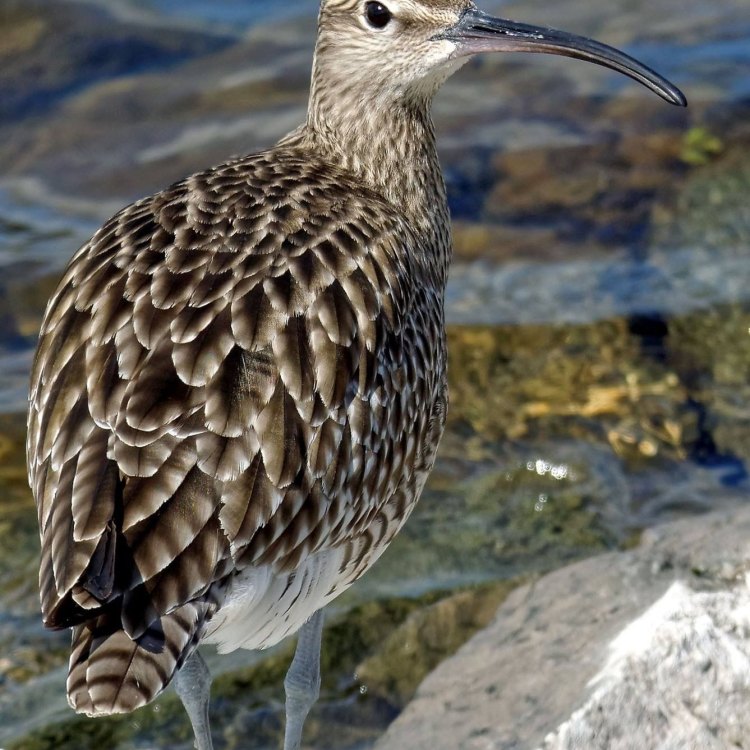
The Elegant and Wily Whimbrel: A Master of Coastal Living
Disclaimer: The content provided is for informational purposes only. We cannot guarantee the accuracy of the information on this page 100%. All information provided here may change without prior notice.


